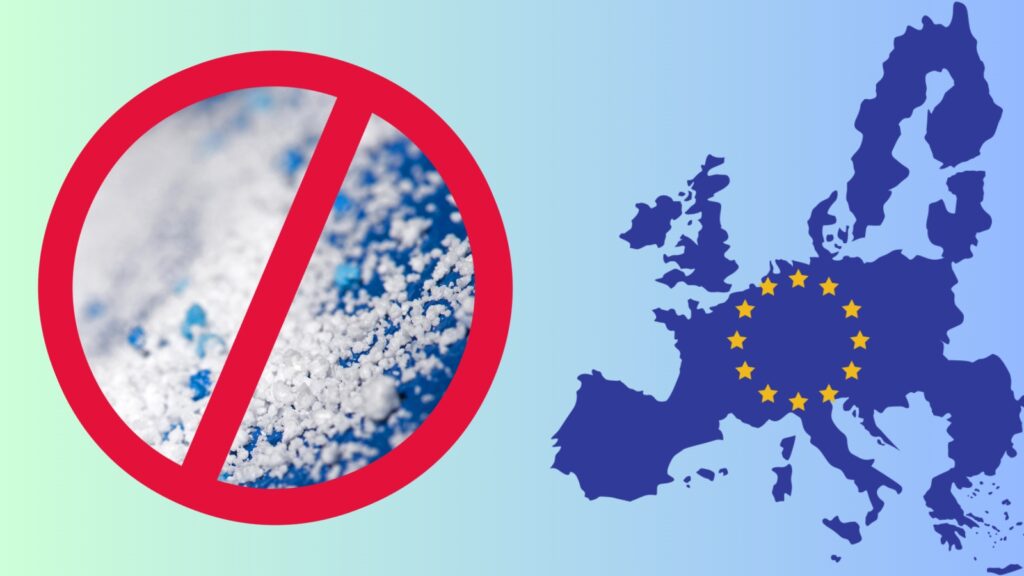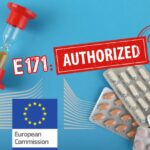
The European restriction on microplastics have officially taken effect… and what about nanoplastics?
Today marks the commencement of the restrictions on intentionally added microplastics approved by the European Commission three weeks ago. This regulatory measure represents a significant advancement in environmental health, yet questions persist regarding the scope and timeline of these regulations.
Nearly 500,000 fewer tonnes of microplastics in the next 20 years
Aiming to reduce microplastics by approximately 500,000 tonnes over the next two decades, the European regulation on intentionally added microplastics sanctioned on September 25, is now in effect following the twenty-day deadline for its implementation.
It specifically targets microplastics voluntarily introduced by industries into various products such as cosmetics, detergents, paints, medicines, fertilizers, etc. It does not address plastic microparticles resulting from the degradation of plastics in packaging, textiles, waste, etc. Alongside marketing bans, the new European regulations also includes information and labeling requirements on these materials.
NGOs satisfied… except with deadlines and nanoplastics
The adoption of this text is a relief for the NGOs that, since 2017, have been fighting to obtain this restriction on superfluous plastics (notably Surfrider Europe, ClientEarth, the European Environmental Bureau (EEB) grouped within theRethink Plastic alliance). However, as they feared in the light of the preparatory texts, the final result contains major loopholes already highlighted by AVICENN, making this restriction far less ambitious than initially expected.
Very long lead times
Despite warnings from NGOs, the extended deadlines for banning microplastics in sports fields and cosmetics, for example (up to eight and twelve years respectively), raise eyebrows. These timelines surpass those suggested by the Socio-Economic Assessment Committee (SEAC) in 2020, highlighting authorities’ leniency toward industry interests at the expense of health and environmental considerations.
In the absence of strong political will, the NGO group Rethink Plastic Alliance emphasizes the need for industry commitment to ensure effective implementation: “We urge all companies that add microplastics to their products, especially those that are exempt from the restriction or benefiting from longer transition periods, to start using safe, microplastic-free alternatives immediately.”
What about small nanoplastics?
The proposed restriction does establish a lower limit for the size of microplastics, and includes all small plastic particles, including nano-plastics (commonly defined as plastics smaller than 1 µm). However, the text introduces a temporary exemption from the regulation for particles smaller than 100 nm in all dimensions (and 0.3 µm in length), when“the concentration1According to the current text “may not be placed on the market as substances on their own or, where synthetic polymer microparticles are present to impart a desired characteristic, in mixtures at a concentration equal to or greater than 0.01% by mass.”of synthetic polymer microparticles cannot be determined using available analytical methods or accompanying documents“, until such methods become available. Absent from the initial proposal drafted by the European Chemicals Agency (ECHA), this exemption was introduced along the way.
It is essential that the Commission clarify how this exemption will be lifted, because, as experts from the University of West England have pointed out in a report report to the Commission at the beginning of the years, the health and environmental risks are even greater at the nano scale and the exemption of nanoplastics represents a “gaping hole” in the regulations. Recent advances in nanoplastic detection2See our dedicated fact sheet on this subjectrisk being hindered back by a lack of regulatory requirements. The considerable progress made in recent years in the metrology of metallic nanoparticles (titanium dioxide and nanosilver nanoparticles in particular) would probably have been much more tentative without the strong impetus of the European regulations imposed “nano” labelling on cosmetics, biocides and foodstuffs in 2013 and 2014, even though these methods were not fully developed at the time.
On a related note: the next NanoMesure France webinar, scheduled for October 20, will focus on the potential of Raman spectroscopy for characterizing titanium dioxide nanoparticles and micro- and nanoplastics.
To be followed …

Our information sheets to go further
Upcoming Nano Agenda

- Scientific conference
- 23rd International conference on Advanced Nanomaterials
- From July 23 to July 25, 2025
- Website: www.advanced-nanomaterials-conference.com

- E-learning program: awareness-raising for personnel who come into contact with nanomaterials during research, formulation, production, maintenance, cleaning, upkeep, etc., as well as safety coordinators or engineers, facility managers, heads of laboratories where nanoparticles are handled.
- Organizers: INSTN Grenoble (CEA)
- On the program:
- 1 – Introduction, definition and characteristics of nanomaterials
- 2 – Toxicity of nanomaterials: the state of knowledge
- 3 – Metrology and characterization of nanomaterials
- 4 – Prevention and protection against nanomaterials in the workplace
- 5 – Quiz: assessment of learning outcomes
- The 2-hour course can be viewed for one month from the date of registration.
- Website: https://instn.cea.fr/…risques-lies-aux-nanomateriaux…

- E-learning program: awareness-raising for personnel who come into contact with nanomaterials during research, formulation, production, maintenance, cleaning, upkeep, etc., as well as safety coordinators or engineers, facility managers, heads of laboratories where nanoparticles are handled.
- Organizers: INSTN Grenoble (CEA)
- On the program:
- 1 – Introduction, definition and characteristics of nanomaterials
- 2 – Toxicity of nanomaterials: the state of knowledge
- 3 – Metrology and characterization of nanomaterials
- 4 – Prevention and protection against nanomaterials in the workplace
- 5 – Quiz: assessment of learning outcomes
- The 2-hour course can be viewed for one month from the date of registration.
- Website: https://instn.cea.fr/…risques-lies-aux-nanomateriaux…
Notes and references
- 1According to the current text “may not be placed on the market as substances on their own or, where synthetic polymer microparticles are present to impart a desired characteristic, in mixtures at a concentration equal to or greater than 0.01% by mass.”
- 2See our dedicated fact sheet on this subject






